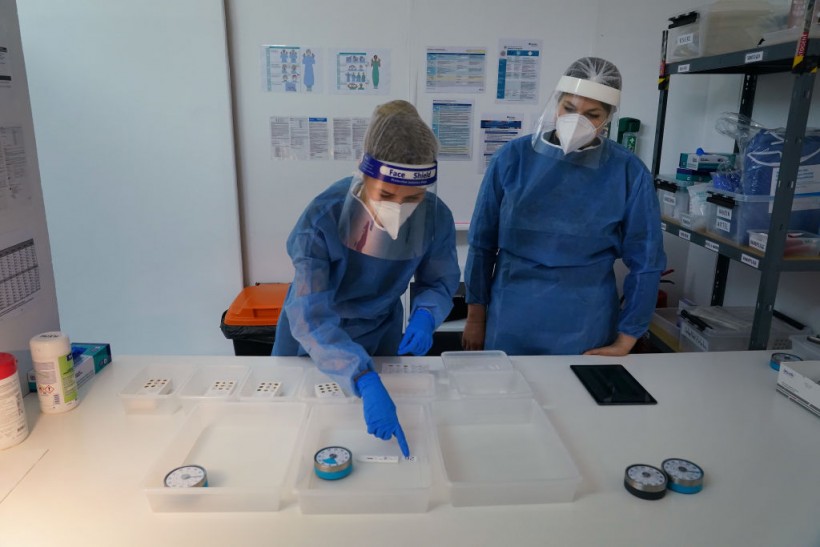KAUST scientists recently introduced a new approach that can deliver COVID-19 test results as fast as less than 15 minutes.
A Medical Xpress report said this diagnostic, bringing together electrochemical biosensors with a precision previously only plausible with slower genetic approaches.
The whole setup can work at the point of patient care on unprocessed samples of saliva or blood minus the requirement of laborious preparation of specimens or centralized diagnostic laboratory.
According to KAUST's Raik Grunberg, a biochemist who co-led the study, the combination of high-tech bioelectronic hardware, material science engineering, and synthetic biology protein design certainly makes it possible to streamline and fast-track COVID-19 testing.
Grunberg and his colleagues at KAUS, including Shahika Inal and Stefan Arold, are currently working with commercial partners to adapt their lab-scale model.
The researchers said they are hoping to develop a bench-top, portable device that can be set out to help control the pandemic.
ALSO READ: What Are the Best COVID-19 Face Masks for Classrooms?

Researchers worked with doctors to verify the examination on clinical samples, both nasal swabs, and saliva, taken from patients.
Biosensor Technology
Inal said, this biosensor technology could be adapted to diagnose other pathogens, and as such, will have a major effect on mitigating pandemics, both at present and in the future.
COVID-19 testing stays as essential as ever. Despite the rising vaccination rates in Saudi Arabia and many parts of the world, worldwide number of cases of COVID-19 stay at alarmingly high levels, and there is a need by public officials of ways to quickly identify those who have contracted the disease so that they can limit transmission of the virus.
Present testing prototypes generally fall under two camps: either they identify viral RNA through a genetic approach, which can be slow and encompasses enzymatic augmentation of trace molecular signals, or they capture antigens, viral proteins, in a manner that they are fast although not almost as precise.
Combination of Speed and Accuracy
This new technique by KAUST is a combination of the protein detection's speed with genetic tests' accuracy. According to the study's co-author, postdoc Keying Guo in Inal's lab Keying Guo, with his colleagues at KAUST, Shofarul Wustoni, and Anil Koklu, even if there is only one virus particle in a sample, their platform can detect it.
In a similar report, Clinical LM said, the system begins with a virus-particular nanobody, binding protein type that can be designed to stick to remains of various coronaviruses, which include those responsible for MERS or Middle East respiratory syndrome, and now, the COVID-19 pandemic.
Such a nanobody is fastened through a series of biochemical connectors to a thin layer of gold that, when there is an added electric current, regulates the flow of electricity through the semiconducting film that it's linked to.
The existence of any "nanobody-bound viral proteins" is changing such a flow, creating a signal that's augmented to quantifiable levels by a device also called an organic electrochemical transistor.
Enhanced COVID-19 Test
Initially, the authors of the study, Rapid single-molecule detection of COVID-19 and MERS antigens via nanobody-functionalized organic electrochemical transistors, published in Nature Biomedical Engineering, enhanced their COVID-19 test on human saliva and blood specimens spiked with bits of proteins from coronaviruses that cause MERS and COVID-19.
Then, they worked with doctors from KAUST Health in Thuwal and researchers from King Faisal Specialist Hospital and Research Center in Riyadh to verify the analysis on clinical samples, both nasal swabs and saliva, taken from patients.
The speed, performance, and versatility compared to standard genetic testing underscoring the potential for the new approach to complement and possibly replace the present diagnostics for COVID-19 and any pandemic in the future.
Related information is shown on TODAY's YouTube video below:
RELATED ARTICLE: Post-COVID-19 Vaccination: How to Know If You Need to Mask Up After Getting Fully Vaccinated
Check out more news and information on COVID-19 on Science Times.














